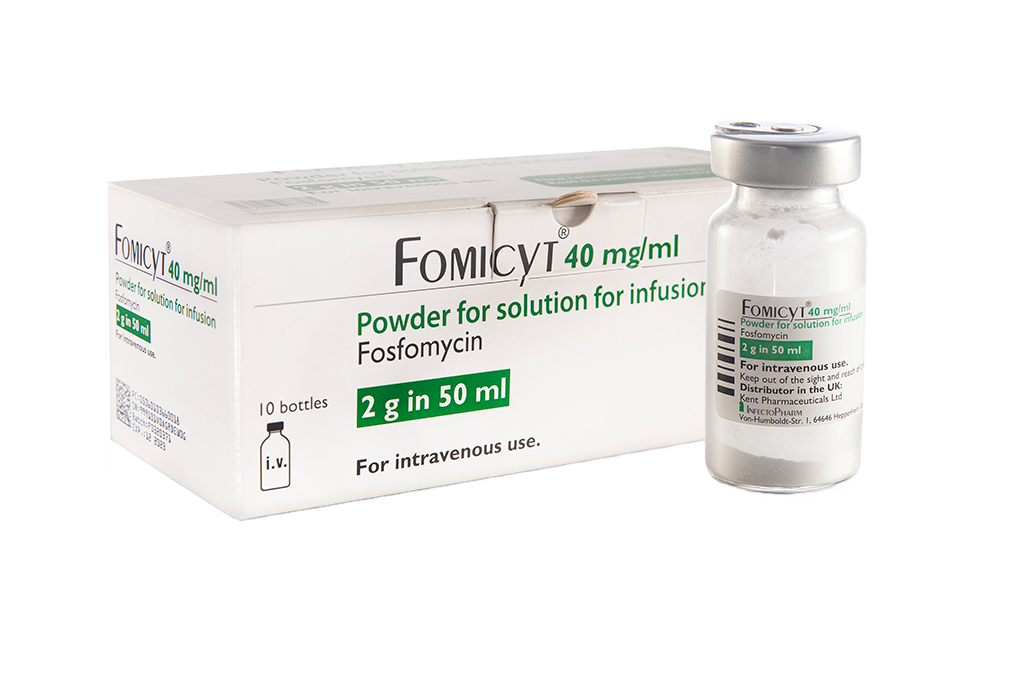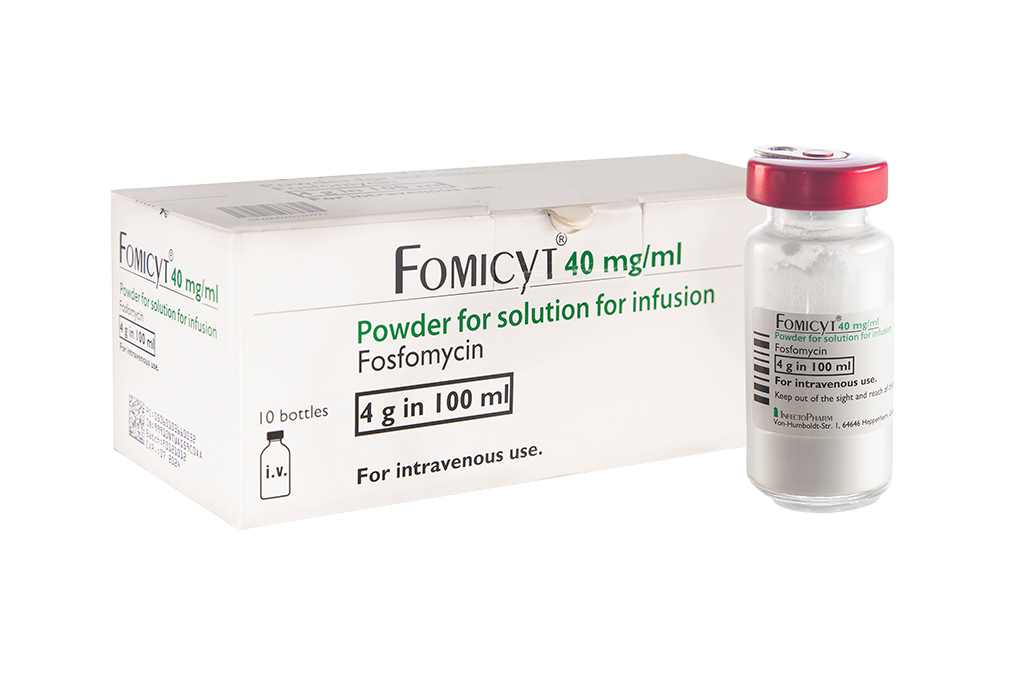This website uses cookies so that we can provide you with the best user experience possible. Cookie information is stored in your browser and performs functions such as recognising you when you return to our website and helping our team to understand which sections of the website you find most interesting and useful.
Fomicyt
Brand Name :
Fomicyt
Generic Name :
Fosfomycin
Partner :
InfectoPharm

Download
Fomicyt Leaflet


What Fomicyt is and what it is used for?
Fomicyt is used to treat patients with AMR Infectious disease. It is given to treat the bacterial infections of the urinary tract, endocarditis, bones and joints, pneumonia, skin and tissues below the skin, central nervous system.
How to use Fomicyt?
Instruction for use – dilution and administration
The powder has to be diluted before administration and is for intravenous use (see information for health care professionals). Presence of a doctor or a nurse is necessary.
Dosage
The dose patient will be given and the frequency of the dose will depend on the type and severity of infection, kidney function, child’s weight and age.
Infusion will normally take 15 to 60 minutes, depending on patient dose. Usually this medicine is given 2, 3 or 4 times a day (12-24 g/day). Please noted that even after the fever has passed and the symptoms have abated, treatment should be continued for a few days more.
Possible side effects
Serious side effects
Tell your doctor straight away if you notice any of the following serious side effects:
- Signs of a serious allergic reaction (very rare: may affect up to 1 in 10,000 people), include: breathing or swallowing problems, sudden wheezing, dizziness, swelling of eyelids, face, lips or tongue, rash or itching.
- Severe and persistent diarrhea (may be associated with abdominal pain or fever)
- Yellowing of the skin or the whites of your eyes (jaundice, the frequency is unknown)
- Confusion, muscle twitching or abnormal heart rhythm, caused by high levels of blood sodium or low levels of blood potassium (common: may affect up to 1 in 10 people)
Other side effects
Common side effects (may affect up to 1 in 10 people)
- Pain, burning, redness or swelling along the vein which is used during infusion of this medicine
- Taste disturbances
Uncommon side effects (may affect up to 1 in 100 people)
- Feeling sick, vomiting, or mild diarrhea
- Headache
- High levels of blood liver enzymes, possibly associated with liver problems.
- Rash
- Feebleness
Side effects with not known frequency (Frequency cannot be estimated from the available data)
- Liver problems (hepatitis)
- Itching, hives
Contraindications
- Hypersensitivity to the active substance or to any of the excipients.












